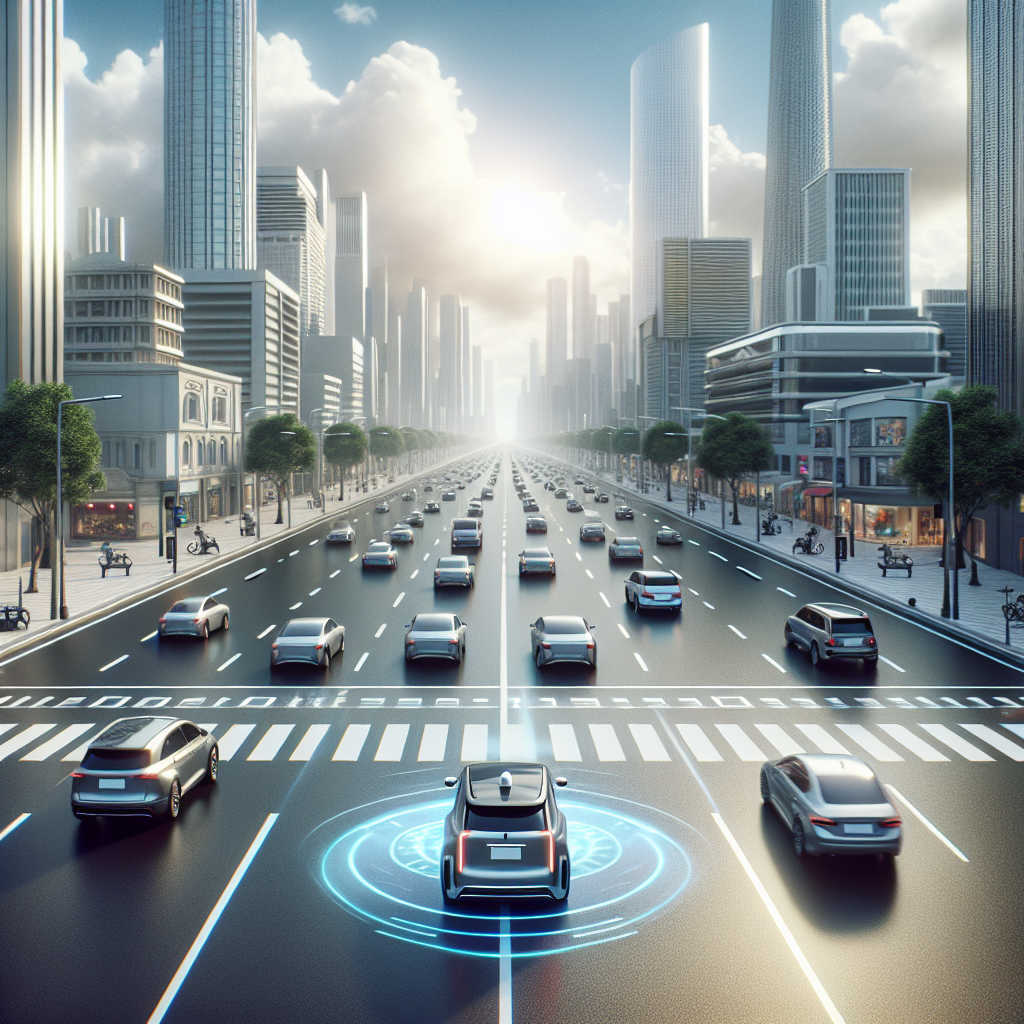Exploring the Role of Autonomous Vehicles in Reducing Traffic Congestion
As cities grow denser and the number of vehicles on the road continues to rise, traffic congestion has become a pervasive issue, leading to significant economic losses, environmental degradation, and reduced quality of life. In this context, autonomous vehicles (AVs) have been heralded as a transformative solution that could radically alter our urban landscapes and commuting patterns. But how exactly could these self-driving vehicles reduce traffic congestion? This article delves into the potential impacts of autonomous vehicles on traffic flow, environmental benefits, and the challenges that need to be addressed to realize this vision.
The Promise of Autonomous Vehicles
Autonomous vehicles, equipped with advanced sensors, artificial intelligence, and machine learning algorithms, have the potential to communicate with each other and with traffic infrastructure, enabling smoother traffic flow and reducing the likelihood of traffic jams. Here are several ways through which AVs could help mitigate traffic congestion:
1. Optimized Routing: Unlike human drivers who might choose suboptimal routes based on habit or insufficient information, AVs can calculate and re-calculate the most efficient routes in real-time, taking into account current traffic conditions, road closures, and other relevant data. This could significantly decrease the overall volume of traffic on congested roads.
2. Platooning: AVs have the capability to drive closely together in synchronized formations known as platooning. This reduces the space needed between vehicles, effectively increasing road capacity. It also minimizes air drag, leading to fuel efficiency and reduced emissions.
3. Reduced Human Error: A significant portion of traffic congestion results from accidents and the inefficient driving habits of humans, such as sudden braking and inconsistent speeds. Autonomous vehicles, operating with precision and predictability, could vastly reduce these incidents, leading to smoother traffic flow.
4. Integration with Smart City Infrastructure: In the future, AVs could be fully integrated with smart city infrastructure, receiving real-time updates about traffic signals, road conditions, and even the movement of pedestrians and cyclists. This would allow for an unprecedented level of coordination on the roads, further reducing congestion.
Environmental Benefits
Beyond improving traffic flow, autonomous vehicles could also contribute to significant environmental benefits. By optimizing route selection and driving more efficiently, AVs could reduce fuel consumption and lower greenhouse gas emissions. Furthermore, the adoption of electric AVs would amplify these benefits, contributing to cleaner air and a reduction in fossil fuel dependence.
Challenges Ahead
Despite the potential benefits, several challenges must be addressed to fully realize the congestion-reducing capabilities of autonomous vehicles:
– Technological Maturity: AV technology is still in development, and significant advancements are required to ensure these vehicles can safely navigate all real-world scenarios.
– Infrastructure Investment: To maximize the benefits of AVs, substantial investments in smart infrastructure will be necessary. This includes upgrading road networks, traffic signals, and communication systems to support vehicle-to-infrastructure connectivity.
– Regulatory Frameworks: Clear and consistent regulations are needed to guide the deployment of AVs and their interaction with traditional vehicles and urban infrastructure.
– Public Acceptance: For AVs to make a significant impact on traffic congestion, they need to be widely adopted. Overcoming public skepticism and ensuring the safety and reliability of autonomous technology will be crucial.
FAQs
Q: When can we expect autonomous vehicles to be commonplace on the roads?
A: While some semi-autonomous features are already available in vehicles today, fully autonomous vehicles that can handle all driving scenarios without human intervention are still several years away. Estimates vary, but widespread adoption could begin in the next decade, with incremental advancements in the meantime.
Q: Will autonomous vehicles eliminate the need for public transportation?
A: Not necessarily. While AVs can reduce personal vehicle congestion, public transportation will remain a more efficient and sustainable option for moving large numbers of people, especially in densely populated urban areas. AVs could complement public transit by providing “last mile” solutions.
Q: Are there privacy concerns with autonomous vehicles?
A: Yes, autonomous vehicles will collect and transmit vast amounts of data to navigate and communicate with infrastructure. Ensuring this data is protected and used ethically is a significant concern that must be addressed through robust privacy protections and regulations.
Q: Can autonomous vehicles completely eliminate traffic congestion?
A: While AVs have the potential to significantly reduce congestion, they are not a panacea. A multifaceted approach that includes investment in public transportation, urban planning, and sustainable mobility options will be necessary to fully address the complex issue of traffic congestion.
Conclusion
Autonomous vehicles present a promising avenue for reducing traffic congestion, with the potential to transform urban mobility through improved traffic flow, enhanced safety, and environmental benefits. However, realizing this potential will require overcoming significant technological, regulatory, and societal challenges. By addressing these issues head-on, we can pave the way for a future where autonomous vehicles contribute to more efficient, sustainable, and livable cities.

